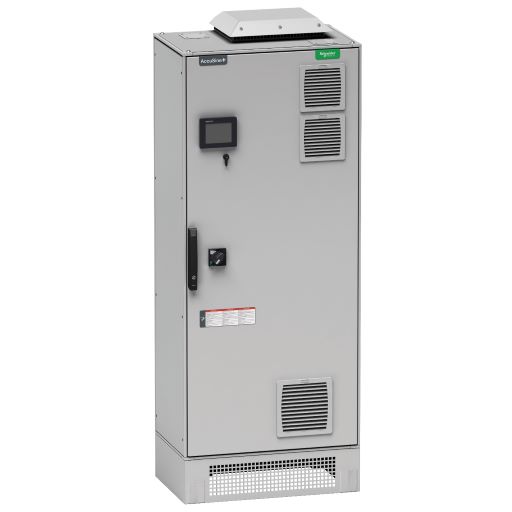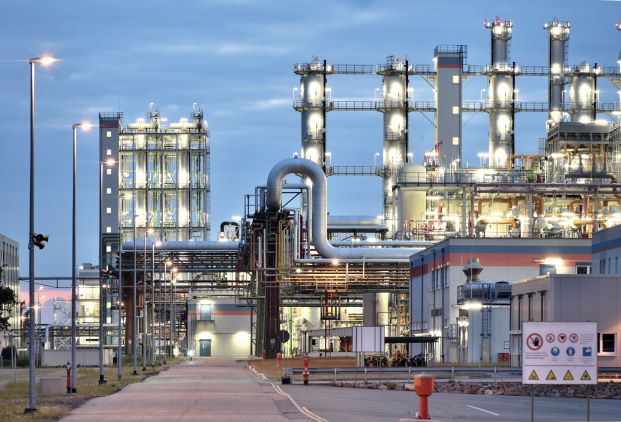Controlling their Impact on Energy Efficiency
A Power Factor Correction (PFC) and harmonics mitigation plan will always improve the energy efficiency of electrical installations.
Much like bumps and holes in a road impede the progress of an automobile, distorted voltage in AC distribution systems negatively impacts operations and drives up expenses.
Identifying and analysing problem areas
In AC distribution systems, the maximum active power is transmitted to a load when voltage and current are in phase and undistorted. When a current is distorted, the instantaneous power fluctuates significantly. The average power is then reduced compared to a situation where the current is undistorted. When voltage and current are phase-shifted, the instantaneous power P = V x I is negative when the signal signs are opposite. The average power is then reduced compared to the situation where the signals are in phase. The relevant parameter is the Displacement Power Factor (DPF) which is the cosine of the phase angle between voltage and current. The current distortion means that harmonics are present, generated by non-linear loads.
The Total Harmonic Distortion (THD) is the usual parameter to evaluate the distortion of current (THDi) or voltage (THDu). Therefore, low DPF and harmonics mean that the power transfer to the load is not maximized for a given value of r.m.s. (root-mean-square) current. In other words, the current circulating in the electrical circuits is higher than what is strictly necessary for transmitting the active power to the machines. As the power losses in the circuits are proportional to the square of the r.m.s. current, the power losses in the two non-ideal situations are doubled. These additional power losses mean more CO2 emission, premature ageing, higher electricity cost and higher equipment cost.
Another major consequence of harmonics is the deterioration of the supply voltage quality. The circulation of harmonic currents through the system impedance creates voltage harmonics resulting in voltage distortion. The negative impact may remain un-noticed, with adverse economic results.
Power Factor Correction and proper harmonic mitigation can contribute to improved operations within companies in several ways: reduced overloading on the electrical system thereby releasing useable capacity, reduced system losses and demand power, reduced risks of outage, and extended equipment lifetime.
Numerous approaches can be deployed to address harmonics and power factor issues in a facility.
Capacitor banks improve Power Factor Correction and help to avoid reactive energy penalties charged by the utility. Capacitor bank equipment may be connected at the following levels of the facility’s power infrastructure installation: medium voltage (MV) substation, low voltage (LV) main switchboard, LV secondary switchboard, and machine terminals.
Active filters are systems employing power electronics which provide the harmonic currents required by nonlinear loads thereby avoiding distortion on the power system. The active filter injects, in opposite phase, the harmonics drawn by the load, such that the line current remains sinusoidal.
Passive filters are implemented when Power Factor Correction is requested with a high level of existing harmonic distortion. These filters consist of reactors and capacitors set up in a resonant circuit configuration, and are tuned to the frequency of the harmonic order to be eliminated. A system may be composed of a number of filters to eliminate several harmonic orders.
Hybrid filters are systems that include a passive filter and an active filter in a single unit. They  combine the advantages of both technologies and provide an optimum cost/performance ratio.
combine the advantages of both technologies and provide an optimum cost/performance ratio.
In the domain of electrical installations, energy efficiency is defined as follows:
- energy savings: reduction in energy consumption
- energy cost optimization: reduction in the cost of energy paid to the utility
- availability and reliability: reduction in the risk of outage, and efficient equipment operation
PFC and harmonic mitigation impacts all three aspects of energy efficiency in the following ways:
- Reduction of the power losses in transformers, cables, switchgear, motors and capacitors
- Reduction of the demand power (in MVA), resulting in lower electrical bills
- Optimization of total system capacity, without risk of overload, nuisance tripping or premature ageing of equipment
In Conclusion
Power Factor and Harmonics, because of their impact on energy efficiency, are important issues to consider for the management of electrical installations. Power Factor Correction and Harmonics mitigation both provide immediate benefits in terms of reduced power losses and reduced electricity bills. In addition, both of these best practices encourage the use of total system capacity in electrical installations thereby increasing payback
on investment.
Article adapted from Schneider Electric White Paper 998-2095-03-05-12AR0_EN Controlling the Impact of Power Factor and Harmonics on Energy Efficiency


